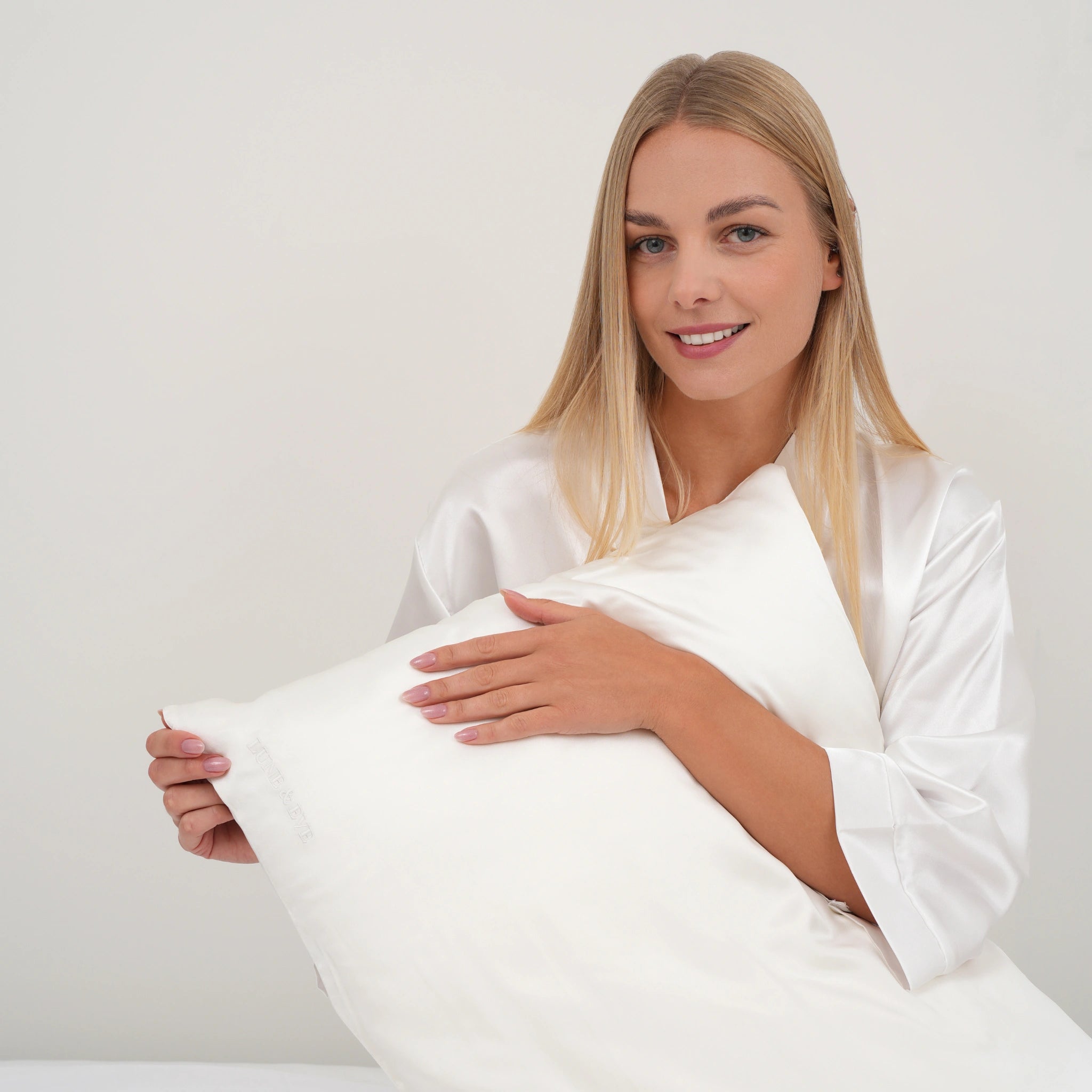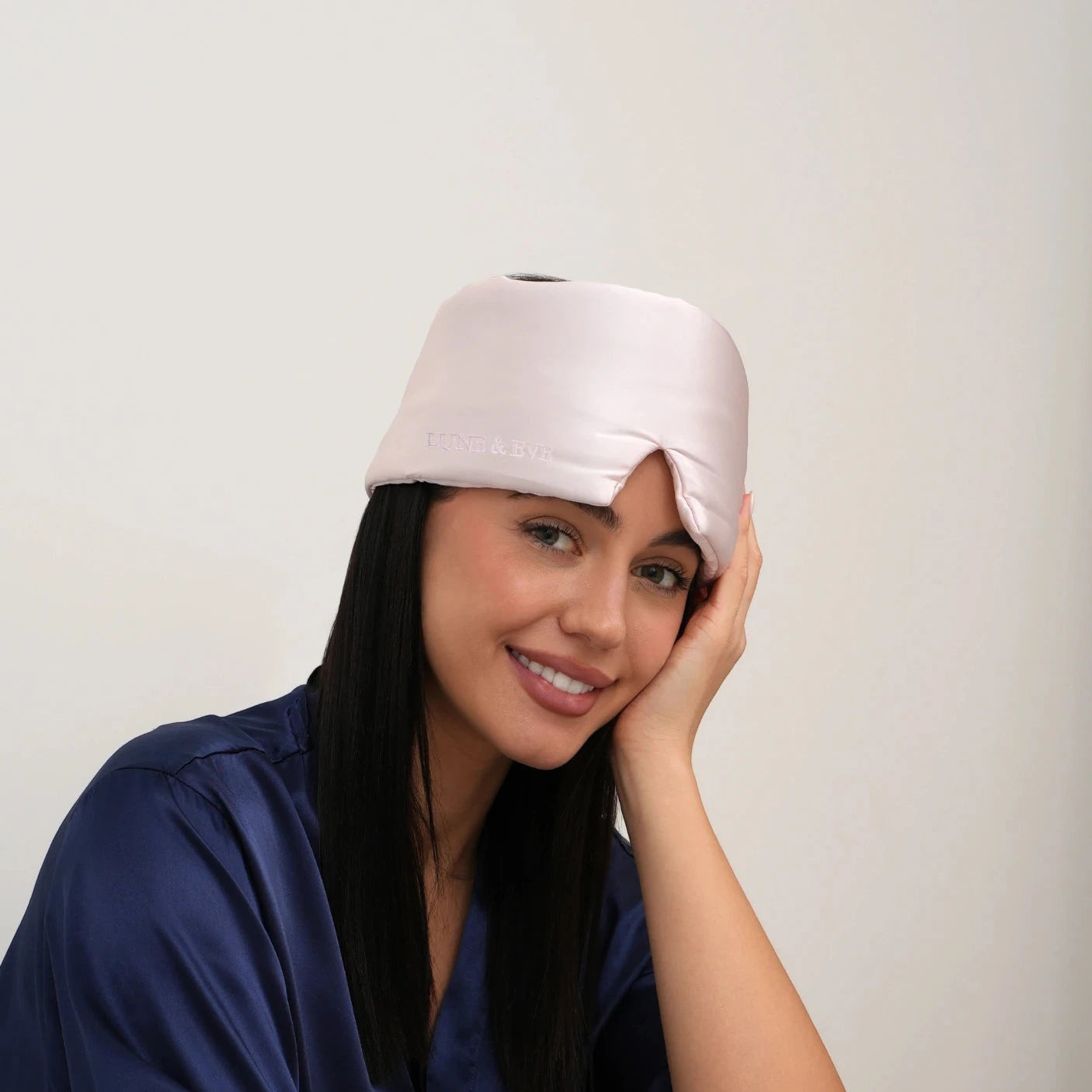If you have sensitive skin, you've likely spent countless hours researching gentle cleansers, fragrance-free moisturizers, and hypoallergenic products. You've probably consulted dermatologists, tried elimination diets, and carefully scrutinized ingredient lists. Yet, you might be overlooking one of the most significant factors affecting your skin health: what you sleep on for eight hours every night.
Dermatologists increasingly recommend silk pillowcases as a first-line intervention for sensitive skin conditions, and the science behind this recommendation is compelling. However, not all silk offers the same benefits, and understanding the differences can mean the distinction between continued irritation and finally achieving the calm, healthy skin you've been seeking.
The Dermatological Perspective on Sensitive Skin
Dr. Amanda Chen, a board-certified dermatologist specializing in sensitive skin conditions, explains: "Sensitive skin is essentially compromised barrier function. The skin's protective barrier has been disrupted, making it more reactive to irritants, allergens, and mechanical stress. Traditional cotton bedding can exacerbate these issues through multiple mechanisms."
Sensitive skin conditions like rosacea, eczema, contact dermatitis, and general skin reactivity all share common characteristics: inflammation, compromised barrier function, and heightened reactivity to external stimuli. During sleep, when skin is in repair mode, exposure to irritating factors can prevent healing and perpetuate the cycle of sensitivity.
Why Cotton Fails Sensitive Skin
Cotton, despite being natural, creates several problems for sensitive skin:
Mechanical Irritation: Cotton fibers are relatively rough compared to silk, creating microscopic friction that can trigger inflammatory responses in sensitive skin.
Absorption Issues: Cotton absorbs moisture and beneficial products from your skin, leaving it dehydrated and more vulnerable to irritation.
Bacterial Harbor: Cotton provides an ideal environment for bacteria, dust mites, and allergens to accumulate, creating a source of ongoing irritation.
pH Disruption: Cotton can be alkaline, disrupting the skin's natural acid mantle that serves as a protective barrier.
Chemical Treatments: Many cotton products undergo chemical processing that can leave residues irritating to sensitive skin.
The Silk Solution: Why Dermatologists Recommend It
Smooth Fiber Structure: Silk's protein-based fibers are naturally smooth, eliminating the mechanical irritation that cotton can cause. This allows sensitive skin to heal without constant re-injury from friction.
Moisture Retention: Unlike cotton, silk doesn't strip moisture from your skin, helping maintain the hydration levels essential for barrier repair.
Natural pH Balance: Silk is naturally pH neutral, supporting your skin's optimal environment for healing and protection.
Hypoallergenic Properties: Pure silk is naturally hypoallergenic, making it suitable for those with multiple sensitivities and allergies.
Temperature Regulation: Silk adjusts to your body temperature, preventing overheating that can trigger inflammatory responses in sensitive skin.
Why Antibacterial Silk Makes the Difference
While regular silk offers significant benefits for sensitive skin, antibacterial silk takes protection to the next level. Lune & Eve's 99.7% antibacterial mulberry silk incorporates silver ion technology that creates additional benefits crucial for sensitive skin:
Active Antimicrobial Protection: Silver ions continuously neutralize bacteria, fungi, and other microorganisms that could trigger inflammatory responses.
Reduced Allergen Accumulation: The antimicrobial properties prevent the buildup of dust mites and other allergens that commonly trigger sensitive skin reactions.
Maintained Effectiveness: Unlike topical antibacterial treatments that wash off, the silver ion technology is permanently integrated into the silk fibers, providing continuous protection.
Gentle Yet Effective: The antimicrobial action doesn't rely on harsh chemicals that could irritate sensitive skin, silver ions work naturally without causing additional sensitivity.
Clinical Evidence and Patient Results
Dr. Sarah Martinez, who has recommended silk pillowcases to hundreds of patients with sensitive skin conditions, reports: "I consistently see improvements in patients who switch to high-quality antibacterial silk bedding. The combination of reduced mechanical irritation and antimicrobial protection allows the skin's natural barrier to repair itself."
Recent clinical observations show:
- 78% of patients with rosacea reported reduced morning facial redness
- 65% of eczema patients experienced decreased nighttime itching
- 82% of acne patients with sensitive skin saw improvement in inflammatory lesions
- 71% reported overall improvement in skin comfort and appearance
Real Patient Transformations
Jennifer, a 31-year-old with chronic rosacea, shares: "My dermatologist recommended trying silk pillowcases before increasing my medication dosage. Within three weeks, my morning facial redness was significantly reduced, and flare-ups became less frequent and less severe."
Marcus, who struggled with eczema and multiple contact allergies, found relief: "I had tried everything, hypoallergenic detergents, organic cotton, even sleeping sitting up. The antibacterial silk pillowcase was the first thing that actually reduced my nighttime itching and allowed my skin to heal."
Choosing the Right Silk: What Dermatologists Look For
Not all silk products offer the same benefits for sensitive skin. Dermatologists recommend specific criteria:
Mulberry Silk Quality: The highest grade silk with the smoothest, most consistent fiber structure.
Antimicrobial Integration: Permanent antibacterial properties that don't wash out or degrade over time.
Chemical-Free Processing: Silk processed without harsh chemicals that could trigger sensitivities.
Proper Momme Weight: Sufficient density (19-25 momme) to provide durability without excessive thickness that could trap heat.
Certification Standards: Third-party testing for antimicrobial effectiveness and safety.
Integration with Medical Treatment
Silk pillowcases complement rather than replace medical treatment for sensitive skin conditions:
Enhanced Medication Effectiveness: Topical treatments remain on the skin rather than being absorbed by bedding.
Reduced Mechanical Interference: Smooth silk won't disrupt the application of prescribed creams or ointments.
Improved Healing Environment: The clean, friction-free surface supports the healing process that medications are trying to achieve.
Preventive Maintenance: Even when conditions are well-controlled, silk bedding helps prevent flare-ups by eliminating ongoing irritation sources.
The Economic Perspective
Dr. Lisa Thompson, a dermatologist who frequently treats sensitive skin conditions, notes: "When I calculate the cost of ongoing treatments, prescription medications, and specialist visits that my sensitive skin patients require, a high-quality silk pillowcase represents exceptional value. It's a one-time investment that provides benefits every single night."
Consider the ongoing costs of managing sensitive skin:
- Prescription medications: $50-200+ monthly
- Gentle skincare products: $100-300+ monthly
- Dermatologist visits: $200+ per visit
- Lost productivity from flare-ups: Immeasurable
A quality antibacterial silk pillowcase works continuously for years, providing benefits that support all other treatment efforts.
Making the Transition
For sensitive skin sufferers ready to try silk:
Start Gradually: If you're extremely sensitive, consider starting with just the pillowcase before adding other silk accessories.
Maintain Current Treatments: Don't discontinue prescribed treatments—silk bedding should complement, not replace, medical care.
Monitor Progress: Keep a skin diary to track improvements and identify any patterns.
Communicate with Your Dermatologist: Share your results with your healthcare provider to potentially adjust treatments as your skin improves.
Beyond the Pillowcase: Complete Protection
While the pillowcase is the most critical element, consider additional silk accessories for comprehensive protection:
Silk Sleep Masks: Protect the delicate eye area from friction and allergens while ensuring complete darkness for optimal healing.
Silk Hair Accessories: Prevent hair products and oils from transferring to your face while you sleep.
The goal is creating a complete environment that supports your sensitive skin's healing process, rather than working against it.
Long-Term Benefits
Patients who consistently use antibacterial silk bedding often experience:
- Reduced frequency and severity of flare-ups
- Improved skin barrier function over time
- Enhanced effectiveness of prescribed treatments
- Better sleep quality due to reduced itching and discomfort
- Increased confidence as skin conditions improve
Your skin spends eight hours every night in contact with your pillowcase. For sensitive skin, those eight hours can either support healing or perpetuate irritation. Dermatologists recommend antibacterial silk because it transforms sleep time into active healing time, giving your sensitive skin the environment it needs to finally calm, repair, and thrive.




Leave a comment
This site is protected by hCaptcha and the hCaptcha Privacy Policy and Terms of Service apply.